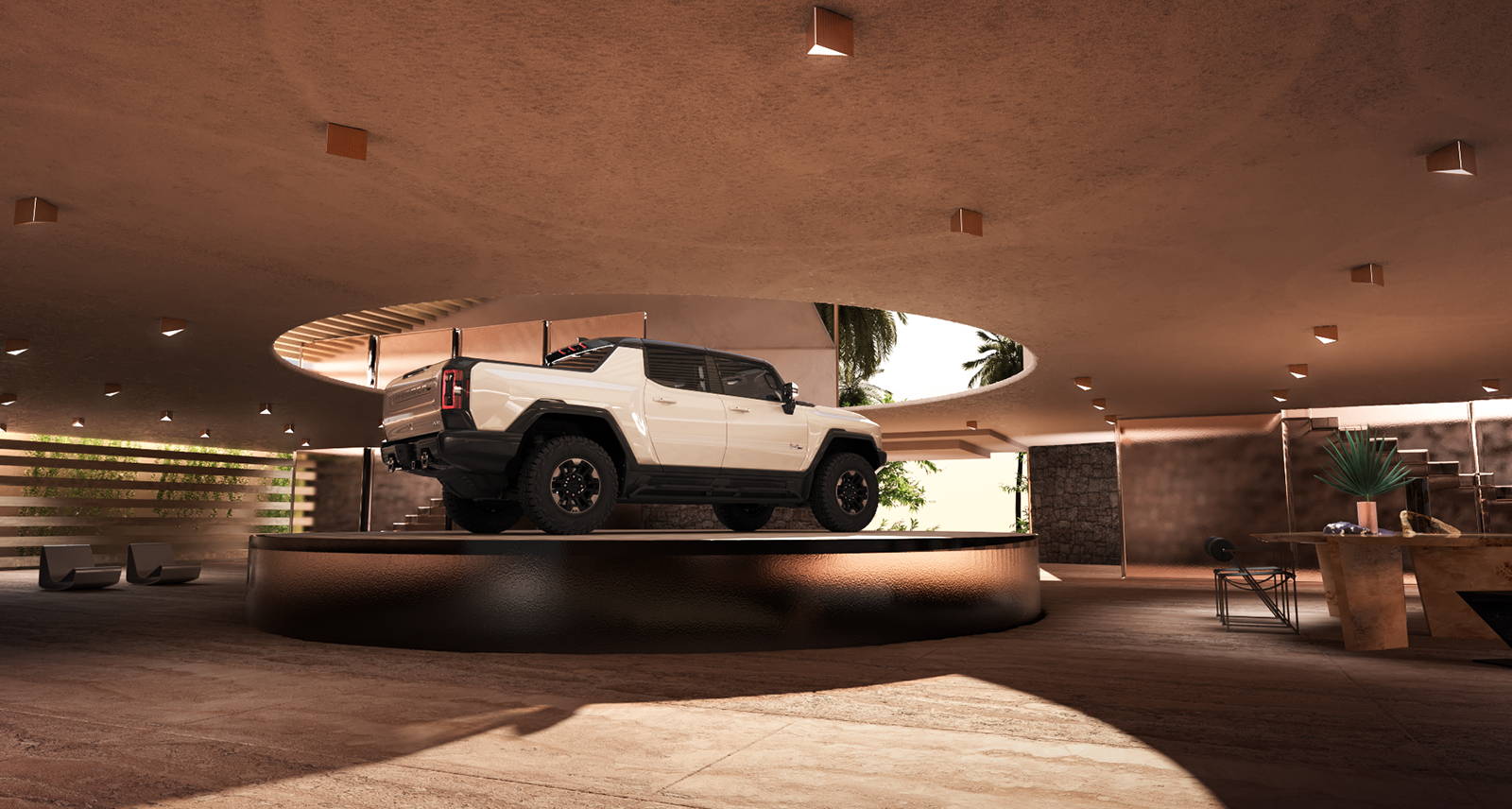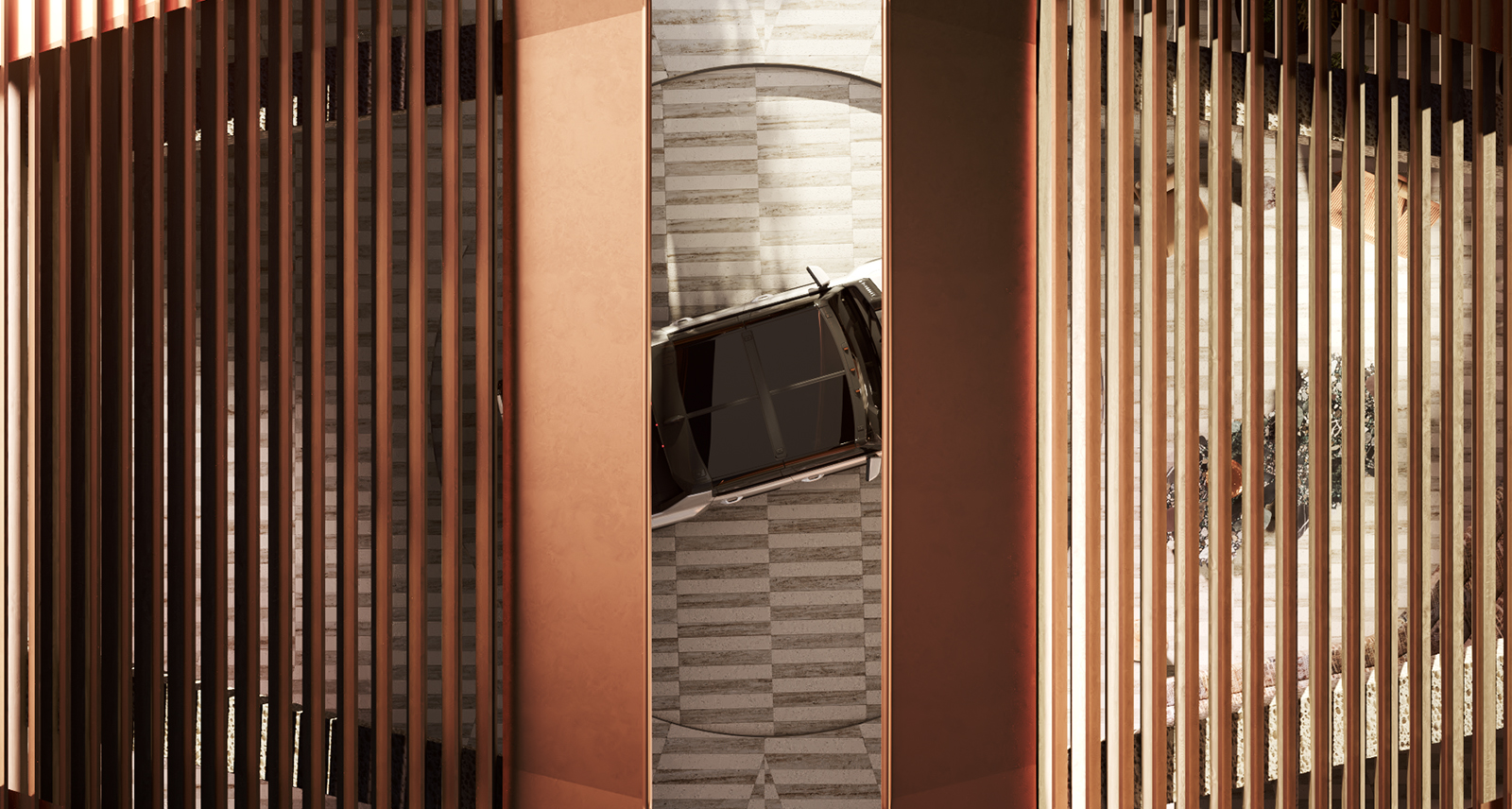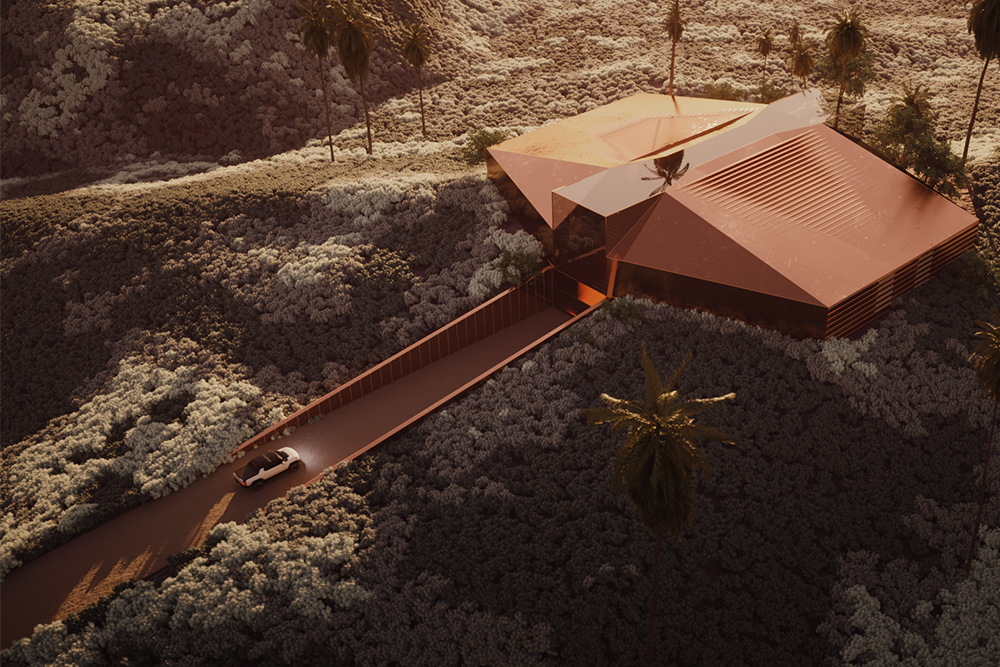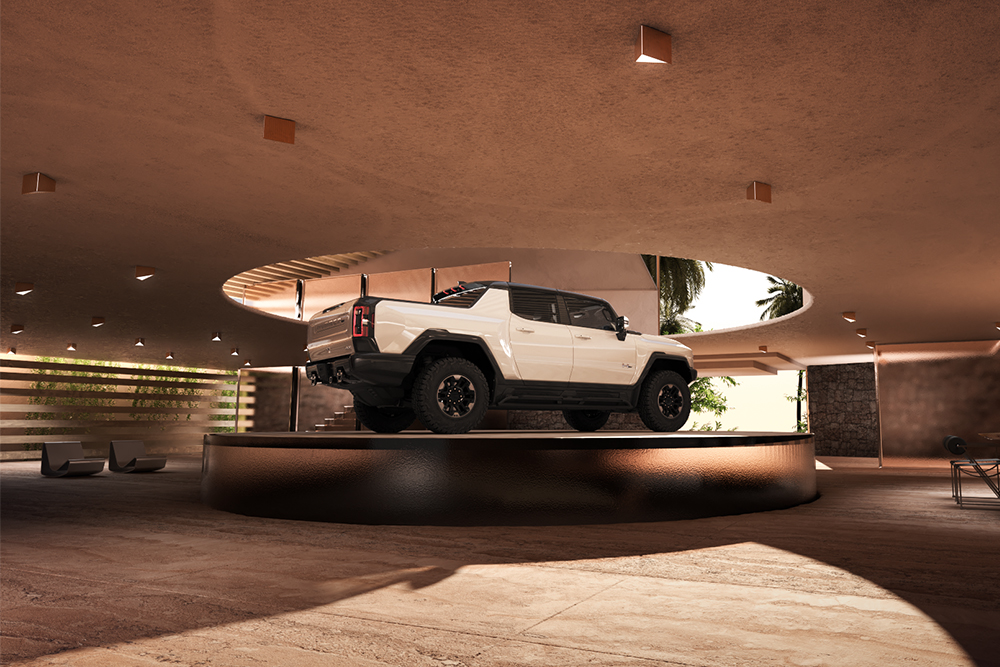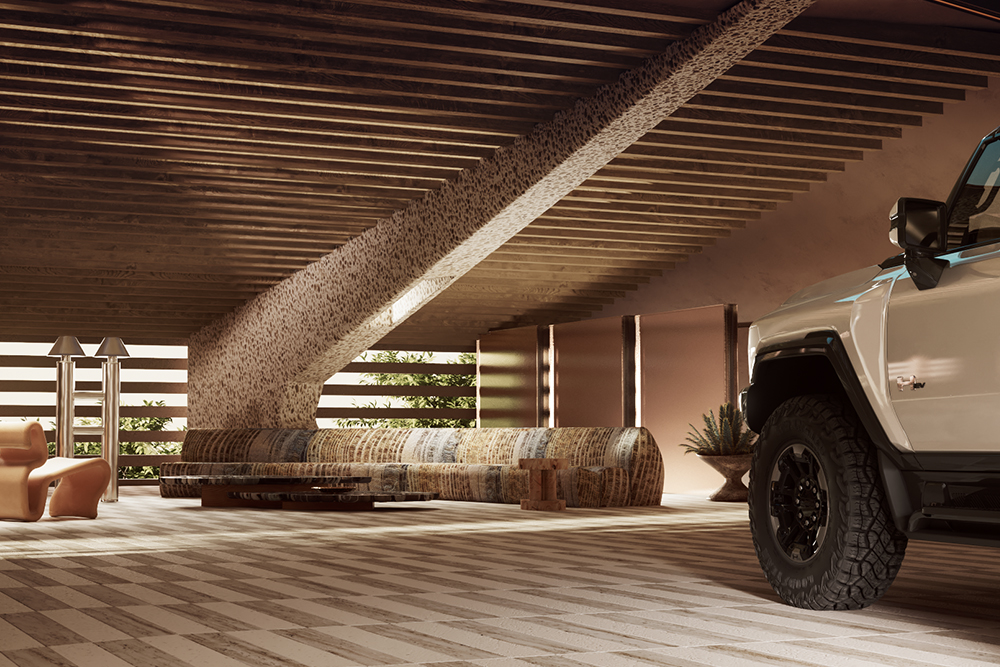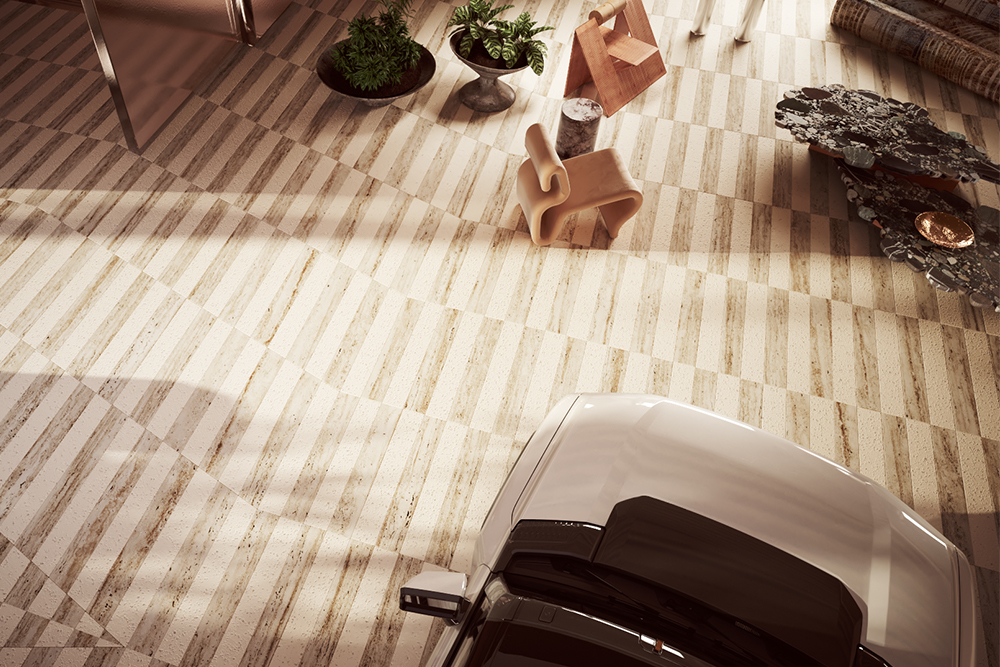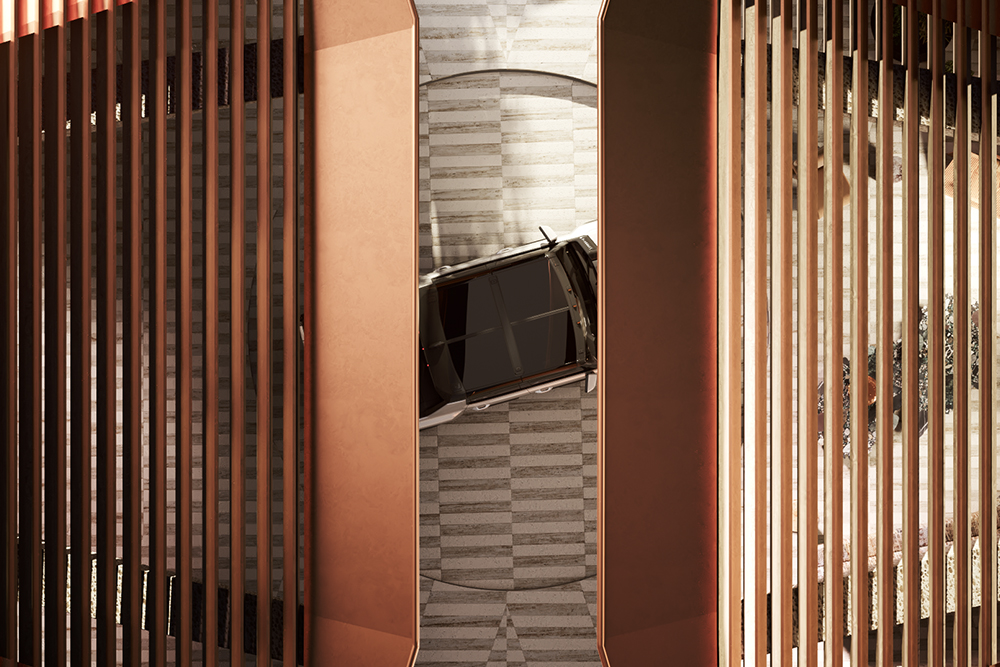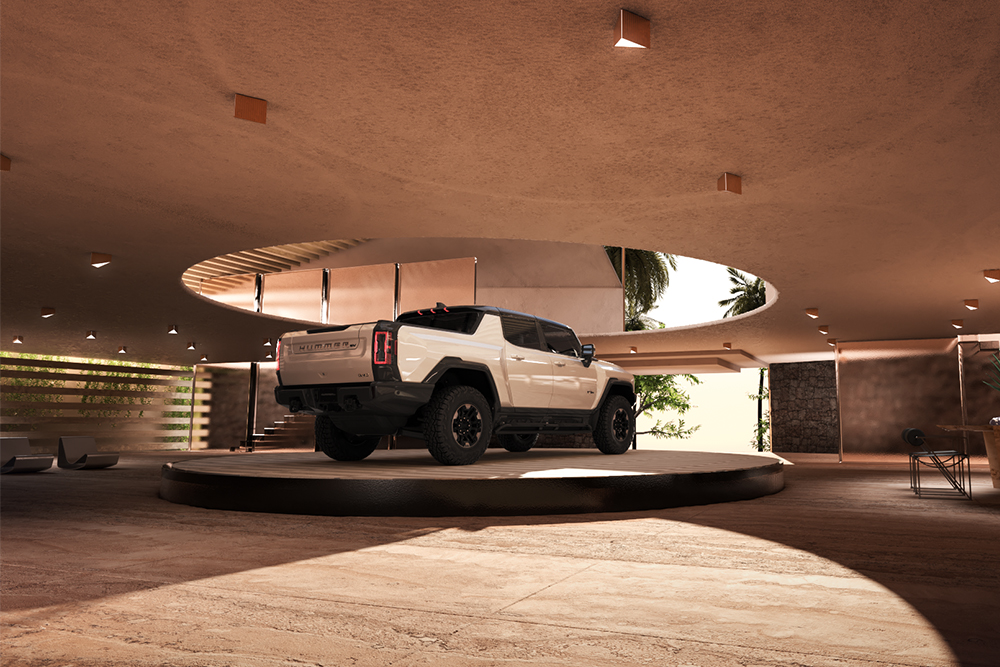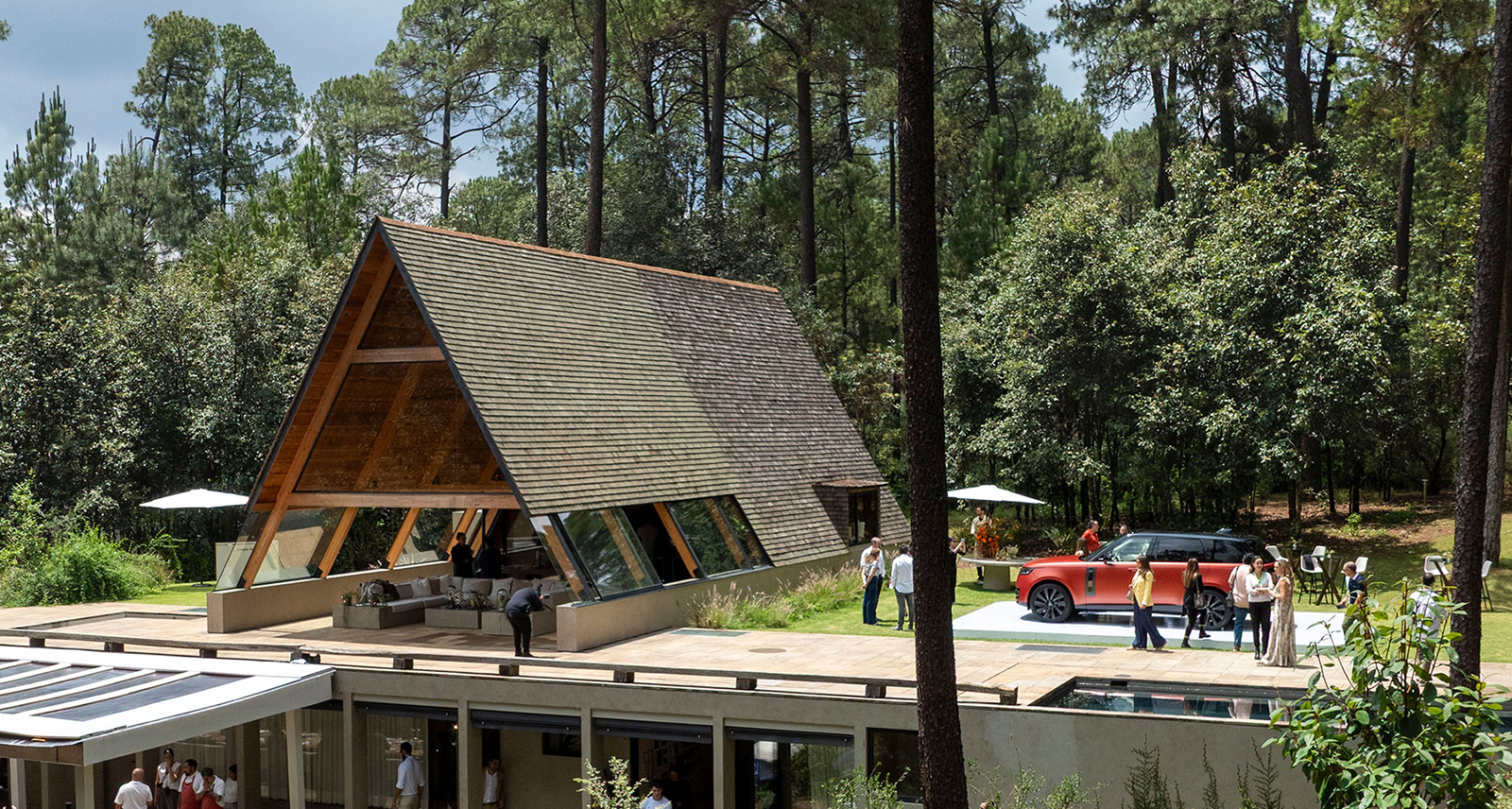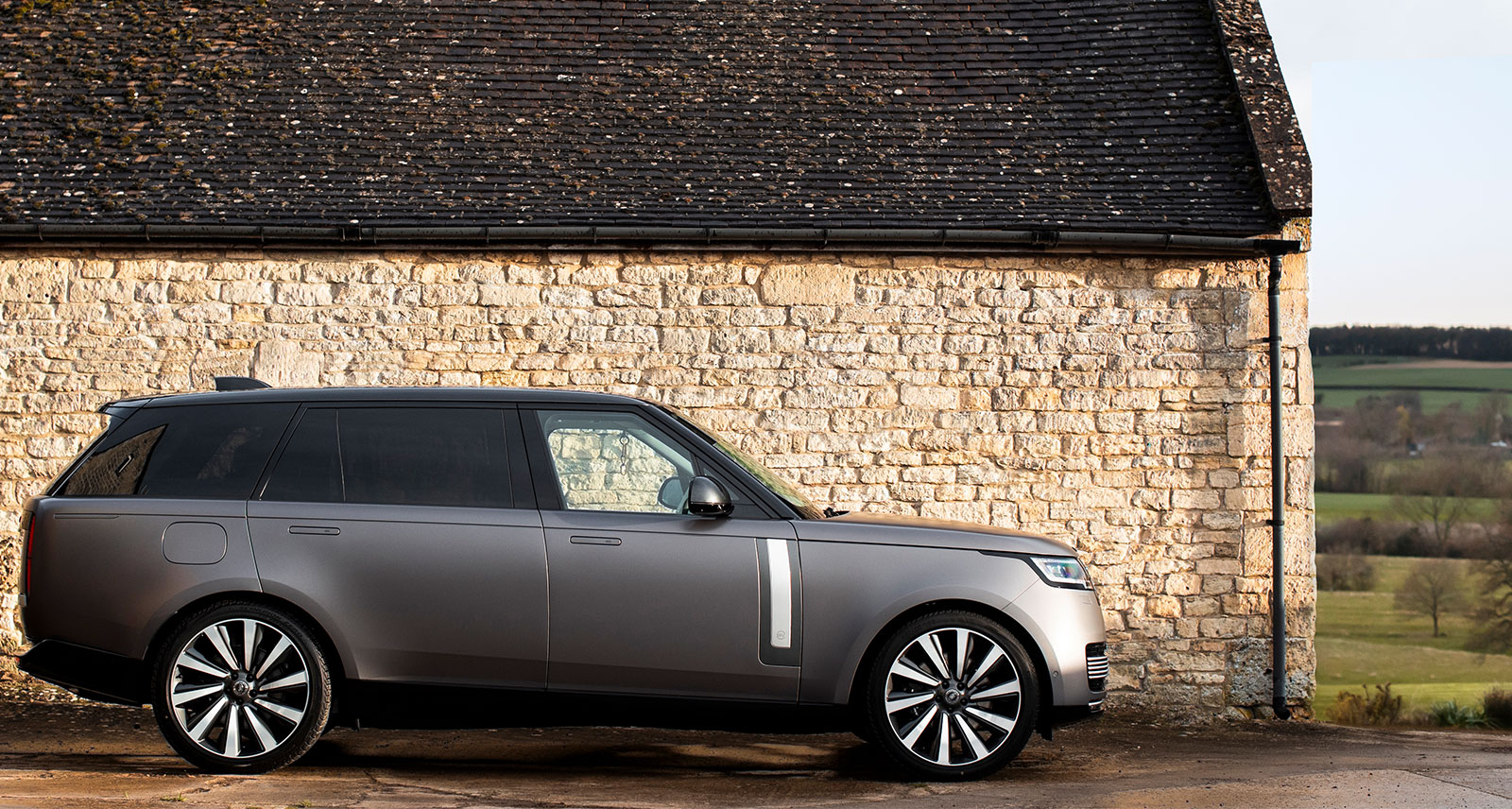EVs are Reshaping Garage Design — Here’s Why
It’s time to come out of the man cave and into the light. Architects and interior designers are reimagining the residential garage as a living space, bringing cars — and those obsessed with them — out of the darkness.
Earlier this year, for example, famed American interior designer Kelly Wearstler created the ultimate base camp for the new Hummer EV. The virtual concept, located in the hills of Southern California, was designed for LeBron James, Hummer’s new brand ambassador. This is not your typical garage. Guided by motion-sensing lights, the electric Hummer enters through a canyon, driving onto a pedestal that spins and lifts the truck up into the centre of an expansive, airy, open-plan room. “This project was a reimagining of a livable space,” Wearstler says. Sunlight filters in through a partial glass roof; the car lives alongside its bronze charging station and designer furniture, like the Jan Ekselius–designed Etcetera chair and Wearstler’s own Echo bench and Monolith side table. The garage is the house and the house is the garage.
Nearly 40 per cent of Canadians agree that their garage is a neglected part of their home, and 41 per cent want to create more livable space within their homes, according to a recent survey commissioned to support Volvo’s The New Garage Design Challenge. The competition asked Canadian designers to “reimagine the oft-neglected garage space, which, following stay-at-home conditions, has become a new frontier in design.” Everyone has been going a little stir-crazy and, as a result, looking for more space. For those fortunate enough to have a garage, well, there’s your solution.
Montreal-based creative designer and architect Tiam Maeiyat won Volvo’s competition with his clever Parking-Parc concept. “For many people, their garage is kind of their secondary office, their man cave,” he says. “But what I tried to do was a kind of family cave. Less focused on indoor space, I used the openness of the outdoors — with a green roof — to develop a new kind of family room.” In his design, wasted space on the roof and walls becomes an extra backyard. The parking space is bathed in natural light from above. Suddenly, you have a place that’s not just a garage but something more.

Like Wearstler’s Hummer base camp, Maeiyat’s garage design is made possible by the fact that electric vehicles are cleaner and nicer to be around than their noisy, smelly, gas-powered counterparts.
Unless you enjoy getting your hands greasy, chances are you typically avoid the garage, only passing through it when you must or when rummaging around for something lost. The garage is often the exclusive domain of car collectors and grease-stained gearheads — or tech startups. It’s an escape, a place where every problem can be solved with a socket set and the occasional injudicious use of a hammer. (Cue Tim Allen’s retrograde grunts of approval.)
It may come as a surprise to learn, then, that those same grease-stained car fanatics and collectors have long blurred the boundaries between garage space and home space. If you’ve ever spent a late night scrolling the #garagegoals tag on Instagram — or #carchitecture, or #dreamgarage, or similar — you’ll know what we’re talking about.
At the more extreme end of the “carchitecture” spectrum, you have the Autohaus home in Austin, Texas, designed by Matt Fajkus Architecture, which put its garage front and centre. It takes up nearly the entire first floor, so all other rooms of the house look down onto the car collection below. In a similar vein, the V’ House by Wiel Arets Architects in the medieval city of Maastricht has a front entrance meant for cars, not just people. You can drive right off the street through the house to an indoor–outdoor garage area in the back. It was commissioned by a couple with a beautifully curated fleet of vintage British and Italian cars.
Houses like these put cars out in the open to be enjoyed by all, like art, but only people with an incurable automotive addiction — people who don’t mind oil stains on the floor and a whiff of gasoline every now and then — would want to build a home around cars. And that’s a shame, because you end up with what we have now: garage as a cave, a neglected space, an escape.
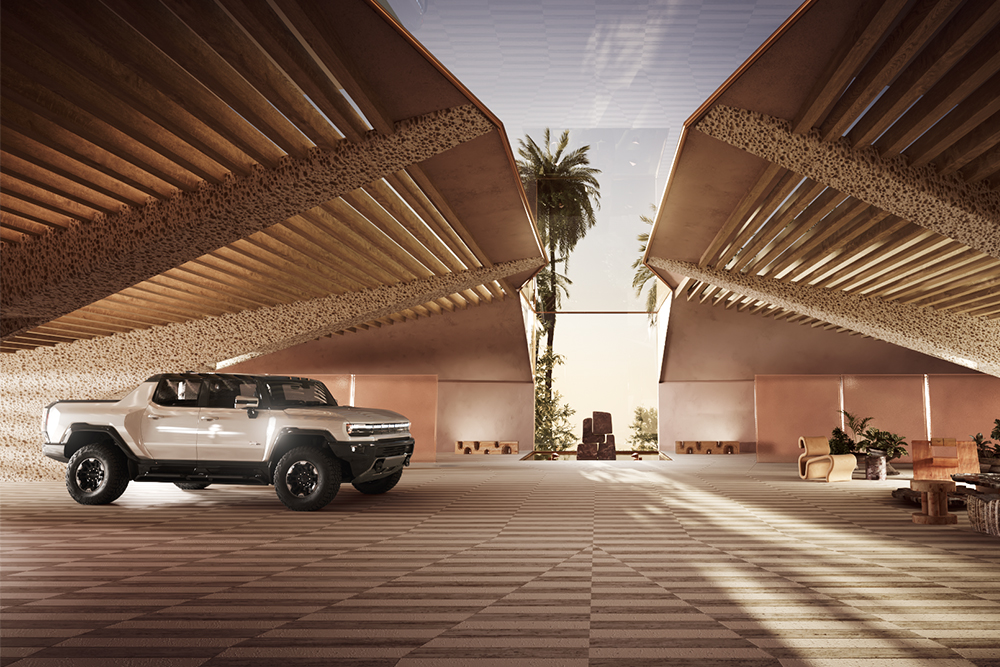
For the past 120 years, gasoline-powered cars have shaped not just garages but also our cities, our infrastructure, our climate, and our daily lives. While the mere fact that a car is electric understandably might not give you the sudden urge to put a car in your living room, as in Kelly Wearstler’s concept, it does present new possibilities. The gradual rise of the electric car offers a once-in-a-century opportunity to rethink our relationship with the automobile. Whether you would like to see the garage become a more useful part of the home or the home become one big garage, the fact is that cars, and those who are obsessed with them, need not be exiled to a dark little cave any longer.
